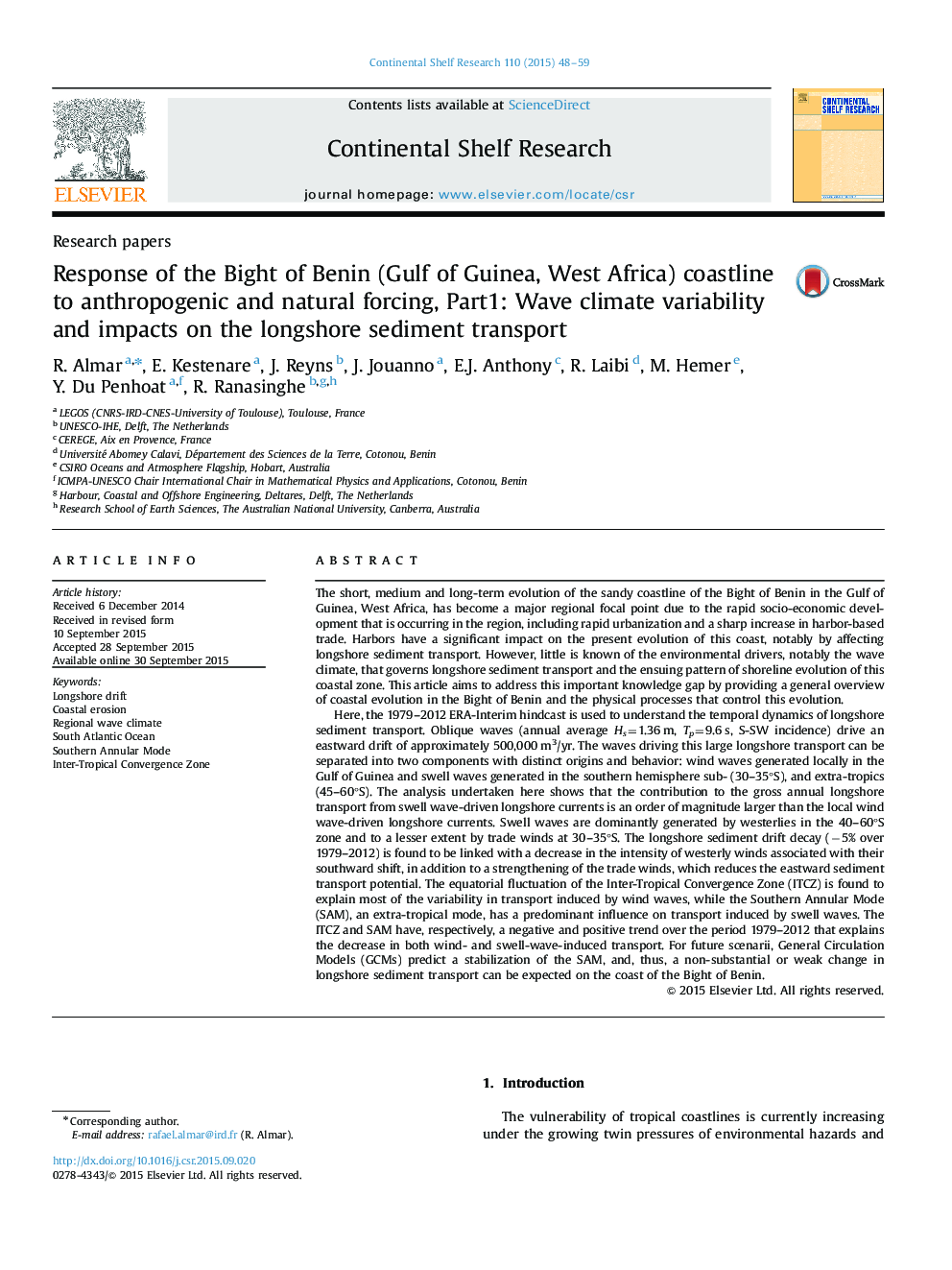| کد مقاله | کد نشریه | سال انتشار | مقاله انگلیسی | نسخه تمام متن |
|---|---|---|---|---|
| 6382973 | 1626102 | 2015 | 12 صفحه PDF | دانلود رایگان |
عنوان انگلیسی مقاله ISI
Response of the Bight of Benin (Gulf of Guinea, West Africa) coastline to anthropogenic and natural forcing, Part1: Wave climate variability and impacts on the longshore sediment transport
ترجمه فارسی عنوان
پاسخ خطوط ساحلی بنین (خلیج گینه، غرب آفریقا) به نیروی انسانی و طبیعی، قسمت 1: تنوع آب و هوا و تاثیرات آن در حمل و نقل رسوبات دریای بلند
دانلود مقاله + سفارش ترجمه
دانلود مقاله ISI انگلیسی
رایگان برای ایرانیان
کلمات کلیدی
موضوعات مرتبط
مهندسی و علوم پایه
علوم زمین و سیارات
زمین شناسی
چکیده انگلیسی
Here, the 1979-2012 ERA-Interim hindcast is used to understand the temporal dynamics of longshore sediment transport. Oblique waves (annual average Hs=1.36 m, Tp=9.6 s, S-SW incidence) drive an eastward drift of approximately 500,000 m3/yr. The waves driving this large longshore transport can be separated into two components with distinct origins and behavior: wind waves generated locally in the Gulf of Guinea and swell waves generated in the southern hemisphere sub- (30-35°S), and extra-tropics (45-60°S). The analysis undertaken here shows that the contribution to the gross annual longshore transport from swell wave-driven longshore currents is an order of magnitude larger than the local wind wave-driven longshore currents. Swell waves are dominantly generated by westerlies in the 40-60°S zone and to a lesser extent by trade winds at 30-35°S. The longshore sediment drift decay (â5% over 1979-2012) is found to be linked with a decrease in the intensity of westerly winds associated with their southward shift, in addition to a strengthening of the trade winds, which reduces the eastward sediment transport potential. The equatorial fluctuation of the Inter-Tropical Convergence Zone (ITCZ) is found to explain most of the variability in transport induced by wind waves, while the Southern Annular Mode (SAM), an extra-tropical mode, has a predominant influence on transport induced by swell waves. The ITCZ and SAM have, respectively, a negative and positive trend over the period 1979-2012 that explains the decrease in both wind- and swell-wave-induced transport. For future scenarii, General Circulation Models (GCMs) predict a stabilization of the SAM, and, thus, a non-substantial or weak change in longshore sediment transport can be expected on the coast of the Bight of Benin.
ناشر
Database: Elsevier - ScienceDirect (ساینس دایرکت)
Journal: Continental Shelf Research - Volume 110, 1 November 2015, Pages 48-59
Journal: Continental Shelf Research - Volume 110, 1 November 2015, Pages 48-59
نویسندگان
R. Almar, E. Kestenare, J. Reyns, J. Jouanno, E.J. Anthony, R. Laibi, M. Hemer, Y. Du Penhoat, R. Ranasinghe,
